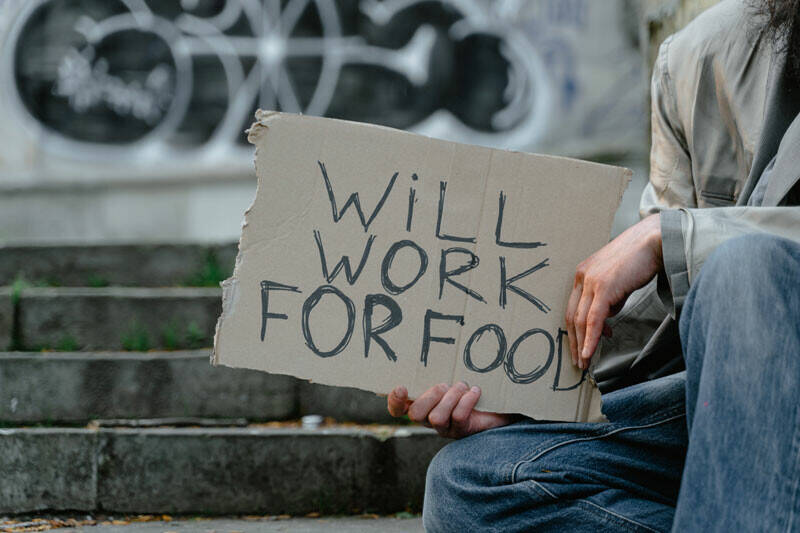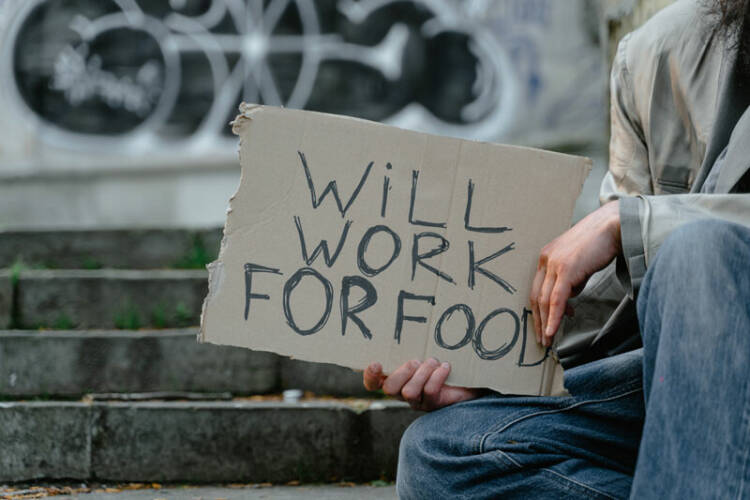Disruption in the SDGs progress
What has been achieved then? Each year the UN presents a Sustainable Development Goals Report which provides an overview of the world’s implementation efforts on the SDGs. The last report was published in 2020, five years after the adoption of the Sustainable Development Goals. The 2020 Report notes that progress had been made in some areas, such as improving maternal and child health, expanding access to electricity and increasing women’s representation in government.
Yet even these advances were offset elsewhere by growing food insecurity, deterioration of the natural environment, and persistent and pervasive inequalities. Also the COVID-19 pandemic has unleashed an unprecedented crisis, causing further disruption to SDGs progress, with the world’s poorest and most vulnerable affected the most.

disruption in the SDG progress
But since 2015 the number of people who suffer from hunger – as measured by the prevalence of undernourishment – has increased. According to the FAO 690 million people are hungry, or 8.9 percent of the world population. That's 60 million hungry people more than five years ago. And according to the World Food Programme, 135 million suffer from acute hunger largely due to man-made conflicts, climate change and economic downturns. The world is not on track to achieve Zero Hunger by 2030. If recent trends continue, the number of people affected by hunger would surpass 840 million by 2030.
Focus on food
SDGs 2 focuses explicitly on food by seeking to ‘end hunger, achieve food security and improved nutrition and promote sustainable agriculture’, but multiple other goals relate to challenges in the food system. SDGs 1 focuses on poverty reduction, where agriculture and food has a key role to play, as a majority of the world’s poor live in rural areas, where farming – predominantly by smallholders – is the central economic activity. Large increases in agricultural investment will be needed both to raise incomes and increase the supply of food sustainably.
Promote prosperity while protecting the planet
Although the Paris Agreement and the SDGs both focus on stopping climate change, the SDGs also cover more social issues. The Sustainable Development Goals are a call for action by all countries – poor, rich and middle-income – to promote prosperity while protecting the planet, set to be achieved by 2030. The goals recognize that ending poverty must go hand-in-hand with strategies that build economic growth and address a range of social needs including education, health, social protection, and job opportunities, while tackling climate change and environmental protection.



Net zero by 2050
But according to the International Energy Agency (IEA) the world is heading for a temperature increase of 2.6 degrees Celsius in 2100. Now that the earth has warmed 1.1 degrees, forest fires and floods are already leading to extreme situations. The annual CO2 emissions in 2050 will still be about the same as they are now, if not more is done. The big emitters China, India, Saudi Arabia and Turkey have yet to present a more ambitious climate plan if they are to meet the Paris Agreement.
The IEA has written a report under the name ‘Net Zero by 2050’. The report is supposed to be a roadmap for the global energy sector, towards a better future. 'Net-zero' means that no more greenhouse gases are released into the atmosphere than nature can absorb, supplemented with new technology such as underground storage of CO2. According to IEA’s chief Fatih Birol, he spoke of “perhaps the greatest challenge mankind has ever faced.”
The food chain is a big polluter
There are many industries that drastically need to change their ways in order to achieve the goals set for a better future. One of them is the food industry. The global food chain is a large contributor to environmental pollution. Especially intensive livestock farming is a primary culprit. As a striking one-third of all agricultural production is destined for livestock feed. Currently, 95 percent of all calories consumed come from just thirty species. And just three of those, corn, rice and wheat, supply about half of the global calorie demand.
A lot of deforestation has taken place to meet the global demands for food production, which threatens the earth’s capacity to sequester carbon dioxide from the air and leads to a loss of biodiversity. And then there is food waste, which according to the FAO, would be the third highest emitter of greenhouse gases after the US and China.

The Paris Agreement's central aim is to strengthen the global response to the threat of climate change by keeping a global temperature rise this century well below 2 degrees Celsius above pre-industrial levels and to pursue efforts to limit the temperature increase even further to 1.5 degrees Celsius.
The answer is no. But that needs to change at the UN’s upcoming Climate Change Conference (COP26), held in Glasgow from the 31st of October until the 12th of November. It’s said that the conference in Scotland will be crucial to the success of global climate policy. Topics that will be discussed include financial support for developing countries and a global emissions trading system. Delegates from almost two hundred countries, who signed the Paris climate agreement six years ago, must reach concrete agreements.
Lisa Appels Xiao Er Kong
2015 was a year of momentum. It was the year that the Sustainable Development Goals (SDGs) were signed by all members of the United Nations, while at the same time the Paris Climate Change Agreement was globally adopted. A lot of promises were made, but what has happened since then? Are we on track with changing the world for a better future?
The urgency around the Sustainable Development Goals and climate action

We need to turn goals into action
trendwatch
5 min

net zero by 2025

Disruption in the SDGs progress
What has been achieved then? Each year the UN presents a Sustainable Development Goals Report which provides an overview of the world’s implementation efforts on the SDGs. The last report was published in 2020, five years after the adoption of the Sustainable Development Goals. The 2020 Report notes that progress had been made in some areas, such as improving maternal and child health, expanding access to electricity and increasing women’s representation in government.
Yet even these advances were offset elsewhere by growing food insecurity, deterioration of the natural environment, and persistent and pervasive inequalities. Also the COVID-19 pandemic has unleashed an unprecedented crisis, causing further disruption to SDGs progress, with the world’s poorest and most vulnerable affected the most.
But since 2015 the number of people who suffer from hunger – as measured by the prevalence of undernourishment – has increased. According to the FAO 690 million people are hungry, or 8.9 percent of the world population. That's 60 million hungry people more than five years ago. And according to the World Food Programme, 135 million suffer from acute hunger largely due to man-made conflicts, climate change and economic downturns. The world is not on track to achieve Zero Hunger by 2030. If recent trends continue, the number of people affected by hunger would surpass 840 million by 2030.
Focus on food
SDGs 2 focuses explicitly on food by seeking to ‘end hunger, achieve food security and improved nutrition and promote sustainable agriculture’, but multiple other goals relate to challenges in the food system. SDGs 1 focuses on poverty reduction, where agriculture and food has a key role to play, as a majority of the world’s poor live in rural areas, where farming – predominantly by smallholders – is the central economic activity. Large increases in agricultural investment will be needed both to raise incomes and increase the supply of food sustainably.

Promote prosperity while protecting the planet
Although the Paris Agreement and the SDGs both focus on stopping climate change, the SDGs also cover more social issues. The Sustainable Development Goals are a call for action by all countries – poor, rich and middle-income – to promote prosperity while protecting the planet, set to be achieved by 2030. The goals recognize that ending poverty must go hand-in-hand with strategies that build economic growth and address a range of social needs including education, health, social protection, and job opportunities, while tackling climate change and environmental protection.


The food chain is a big polluter
There are many industries that drastically need to change their ways in order to achieve the goals set for a better future. One of them is the food industry. The global food chain is a large contributor to environmental pollution. Especially intensive livestock farming is a primary culprit. As a striking one-third of all agricultural production is destined for livestock feed. Currently, 95 percent of all calories consumed come from just thirty species. And just three of those, corn, rice and wheat, supply about half of the global calorie demand.
A lot of deforestation has taken place to meet the global demands for food production, which threatens the earth’s capacity to sequester carbon dioxide from the air and leads to a loss of biodiversity. And then there is food waste, which according to the FAO, would be the third highest emitter of greenhouse gases after the US and China.
Net zero by 2050
But according to the International Energy Agency (IEA) the world is heading for a temperature increase of 2.6 degrees Celsius in 2100. Now that the earth has warmed 1.1 degrees, forest fires and floods are already leading to extreme situations. The annual CO2 emissions in 2050 will still be about the same as they are now, if not more is done. The big emitters China, India, Saudi Arabia and Turkey have yet to present a more ambitious climate plan if they are to meet the Paris Agreement.
The IEA has written a report under the name ‘Net Zero by 2050’. The report is supposed to be a roadmap for the global energy sector, towards a better future. 'Net-zero' means that no more greenhouse gases are released into the atmosphere than nature can absorb, supplemented with new technology such as underground storage of CO2. According to IEA’s chief Fatih Birol, he spoke of “perhaps the greatest challenge mankind has ever faced.”


The Paris Agreement's central aim is to strengthen the global response to the threat of climate change by keeping a global temperature rise this century well below 2 degrees Celsius above pre-industrial levels and to pursue efforts to limit the temperature increase even further to 1.5 degrees Celsius.
The answer is no. But that needs to change at the UN’s upcoming Climate Change Conference (COP26), held in Glasgow from the 31st of October until the 12th of November. It’s said that the conference in Scotland will be crucial to the success of global climate policy. Topics that will be discussed include financial support for developing countries and a global emissions trading system. Delegates from almost two hundred countries, who signed the Paris climate agreement six years ago, must reach concrete agreements.
Lisa Appels Xiao Er Kong
2015 was a year of momentum. It was the year that the Sustainable Development Goals (SDGs) were signed by all members of the United Nations, while at the same time the Paris Climate Change Agreement was globally adopted. A lot of promises were made, but what has happened since then? Are we on track with changing the world for a better future?

The urgency around the Sustainable Development Goals and climate action
We need to turn goals into action
5 min










